Tomb of Ramose at Thebes in Luxor Egypt | TT 55 | Discover Valley of Nobles Facts and History of Pharaonic Tombs.
In this article, we will shed some light on the tomb of Ramose at Thebes in Luxor as one of the biggest and most beautiful tombs in the Valley of Nobles, Sheik Abd El-Qurnah between the Hills and Ramesseum.
The tomb of Ramose TT 55 is very unique because it mixes two phases of art, the art before the Amarna period, and the art of the Amarna Period.
TT55 is very important from the historical Point of view as it shed light on Ancient Egyptian History during the period of two different Pharaohs Amenhotep III and Akhenaten.
Tomb of Ramose
We will try to explain the best way to get to Ramose tomb and the ticket price and opening hours but above all the importance of the tomb and the owner. Moreover, there is one scene in Ramose tomb that is very important and still needs more study which is called The Unidentified Temple Scene in TT 55.
Who was Ramose?
Ramose was the son of Heby and Ipuya, the mayor of Memphis, the oldest capital of united Egypt during the reign of Amenhotep III. Meanwhile, the Son Ramose was the vizier of Egypt at the end of the reign of Amenhotep III and the beginning of the reign of Amenhotep IV (Akhenaten), 18th Dynasty, The New Kingdom of Ancient Egypt.
During the New Kingdom of Egypt, there were two viziers in Egypt, one for the north and one for the south and till now it is not clear whether Ramose was the Northern vizier or the southern one. Fortunately, we know how important is Ramose from his tomb and from his name which was found in the palace of king Amenhotep III in Malkata.
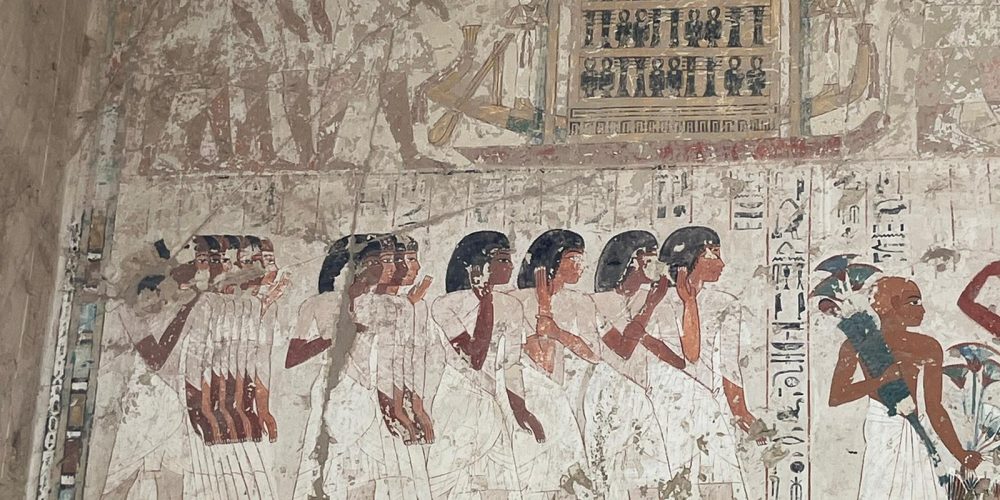
Where is Ramose Tomb Located?
The tomb of Ramose TT 55 is located in the Theban Necropolis, Valley of the Nobles on the West bank of Nile River at the foot of the Hill of Sheik Abd El-Qurnah (Sheikh Abd El Gurna), facing the Mortuary temple of Ramses II, Ramesseum. Ramose tomb is North of TT 57, South of TT 53 in the Valley of the Nobles, Luxor Egypt.
How to get to the tomb of Ramose?
After getting the ticket of the tomb and by the way, the ticket includes 3 tombs in the Valley of the Nobles Ramose tomb, Userhet tomb, and Khaemhet tomb. Facing Ramesseum temple is the car parking of the Valley of the Nobles, if you face the mountain and about 150m to your right-hand side, there is a little building. In front of the building. There is the entrance to Ramose’s tomb.
When the Tomb of Ramose TT55 was discovered?
The tomb of Ramose was never finished in antiquity and most probably Ramose was never buried in it. The tomb was abandoned and collapsed with time for some reasons we will mention later. Anyhow, the tomb today with its flat roof and replaced columns date back to 1927-1928 when Émile Baraize built the roof and added 13 sandstone columns.
Before that date, the tomb was under debris and the original roof fell down till Windsor Villiers Stuart in February 1879 saw the design of the sun god of Akhenaten on the walls.
Gaston Maspero between 1884-1885 uncovered part of the tomb and the south wall but was not very serious excavations
A.E. Weigall, with support from Robert Mond and the Metropolitan Museum of New York in 1904 did a good job and between 1924-1927 Mond removed enormous debris and sand.
Walter B. Emery uncovered the entrance, courtyard, and the Hypostyle Hall of the tomb. In addition, the burial chamber was uncovered and various loose fragments found during this work were replaced
Facts about TT 55
- The tomb of Ramose on Luxor west bank of the Nile River in the Theban Necropolis, Sheik Abd El-Qurnah necropolis under Number TT 55
- Ramose tomb is one of the largest and most beautiful tombs compared to the tombs of Nobles
- Unfortunately, the tomb of Ramose is unfinished tomb since antiquity because the owner started a new one in Amarna when his king Akhenaten moved there
- Three walls are decorated while the northeast wall is not decorated
- The tomb of Ramose is the finest tomb in the Valley of the Nobles
- It is uncertain whether Ramose was ever buried in this tomb TT 55 or not
- Some of Ramose’s family are portrayed in the tomb such as his mother, father, brother, and sister-in-law
More Facts
- The mourning women scene in this tomb is one of the masterpieces of the 18th Dynasty art
- Fortunately, the tomb of Ramose is a perfect example of the conversion from the God Amun belief during the New Kingdom to the God Aton belief during the reign of the heretic king Akhenaten. Meanwhile, the reliefs show the different phases of art before the Amarna period and the art of the Amarna
- Exceptionally, the tomb has some painted scenes like the one on the south wall showing the funerary scenes when we can see the coffin on a boat being dragged along with a sled
- Ramose’s wife is called Meryet- Ptah and seems they had no children because none of them is portrayed in the tomb
- King Akhenaten and his wife Queen Nefertiti were found two times on the walls of Ramose’s tomb
- Finally, Ramose’s tomb shows the difference between the belief in the new Kingdom and the Ancient Egyptian language used to express prayers.
Tomb of Ramose at Thebes in Luxor Layout | Ramose’s Tomb Design
The tomb has a T- shape design and the tomb consist of
- Entrance (outside the tomb)
- Stairway (outside the tomb)
- Courtyard (outside the tomb)
- Short stairway
- Hypostyle Hall with 32 columns
- Pillared Hall with 8 columns
- Subterranean burial chamber
Decorations
We mentioned that the tomb of Ramose is unfinished and only 3 walls are decorated while one of them is painted. The scenes between funerary scenes, offering scenes, and the new cult of Aton scenes. Here we will mention the most important scenes and try to pick one scene from everything
The Funerary Scenes of the tomb of Ramose in the Valley of the Nobles
- The funerary scene of the tomb of Ramose is on two registers. The upper register shows the mummy and the canopic jars in their shrine are taken on sleds to the tomb of Ramose.
- In front of the sleds is a scene of the TEKNU which is a funerary ritual. Nevertheless, it is not so clear till now.
- The second register shows more of the funerary procession with Ramose’s funerary objects taken to the tomb. While the slaves cry to him and confess they lost their lord.
- Slaves carry jars, beds, chairs, sandals, and boxes full of funerary objects.
- One of the most beautiful scenes on the walls of Ramose’s tomb is the mourning women.
- We can see women dress in white, gathering together with their hair loose participating in the funeral of Ramose.
- In another scene, we can see more women are depicted in emotional grieving. Meanwhile, they kneel on the ground while beating their chests and covering their heads in the sand.
- Both registers on this wall ended with a standing big figure for the goddess of the West
Banquet Scene in Tomb of Ramose at Thebes in Luxor
- When entering the colonnade hall and to our left-hand side (east wall) we can see the Ramose funeral banquet scene. The scene includes some of his family members such as his mother, father, brother, and sister-in-law. The scene is amazing but the problem is all the figures are uncolored except the eyes.
- We can see two priests purifying Ramose between them and he is dressing the vizier dress
- Another scene shows Ramose setting behind his wife standing hugging him and in front of the three girls holding sistrums and menats neckless.
West Wall North Side, God Aton (Aten) Ra
- The famous scene of the god Aten Ra, the main god of Akhenaten, and the one and the only is portrayed as a sun disc, sending sun rays, each sun ray ends with a hand. The hand is holding the Key of Life Ankh symbol of happiness and long life.
- King Amenhotep IV (Akhenaten) and his wife Queen Nefertari looking from a window, most probably the Malkata Palace window and they are under the protection of Aten Ra.
- There are some cartouches including the names of the king Akhenaten and also some enemies are portrayed there such as Nubians and Asians.
- There is a scene of Ramose kneeling in front of the Akhenaten and Nefertiti and pronouncing praise on the king.
- The couple king and Queen give Ramose the Gold of Honour and other gifts to the point that there are a lot of men carrying that to Ramose’s home
- In the lower register, there is a sketch show four Nubians, three Asiatics, and one Libyan in front of Ramose.
Subterranean Burial Chamber
The burial chamber of Ramose is about 5m lower than the level of the tomb. The room is running from east to west and it is not decorated with 4 columns. There are some small chambers around the burial chamber and they have rough walls and they are undecorated.
Opening Hours of the Valley of Nobles Luxor Egypt
Tomb of Ramose is open daily from 07.00 am to 17.00 pm.
Tomb of Ramose Ticket Price
You can purchase an Entrance ticket for the Ramose tomb from the Ticket window which is next to the Memnon Colossi
Adult: EGP 60 (3.2 $)
Students with valid cards: EGP 30 (1.6 $)
Children aged 6-12 years: EGP 30 (1.6 $)
Children under 6 years: FREE
Finally, the tomb of Ramose is one of the best things to do in Luxor while you enjoy your Luxor Tours as part of your program. Egypt Goota Travel includes the Valley of the Nobles in most of the programs of the Nile Cruises, Luxor Day Tours, and Private Day tours from Hurghada and Marsa Alam.


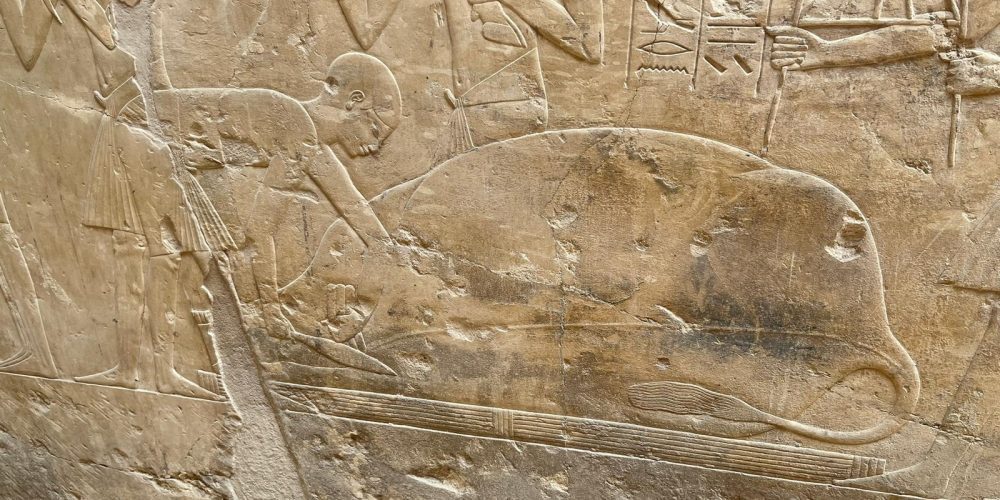
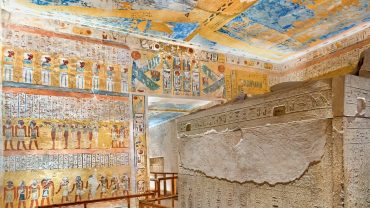
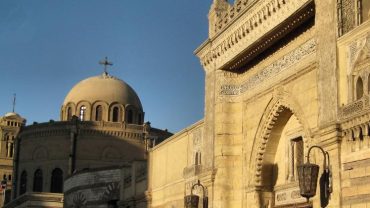
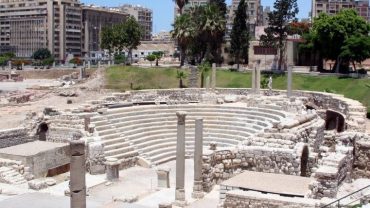
Comment (0)